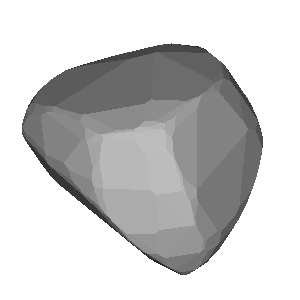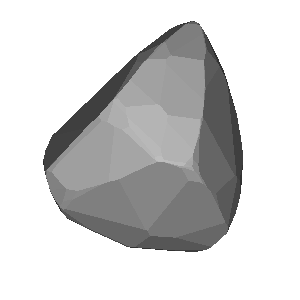2019-09-14 / TYC 1891-01348-1 / (734) Benda
| # | OBS | Observer | Occ | Meth. | Instr. | CC | TSRC | UT1 | UT2 | UT3 | UT4 | UT2E | UT3E | Dur. | Chrd |
|---|---|---|---|---|---|---|---|---|---|---|---|---|---|---|---|
| 1 | show | Arnaud Leroy | O+ | CCD | M280 | FR | GPS++ | 03:07:00 | 03:08:42.94 | 03:08:43.45 | 03:10:00 | 0.05 | 0.05 | 0.51 | 12.9 |
| 2 | show | Olivier Dechambre | O+ | CCD | M279 | FR | GPS | 03:00:00 | 03:08:40.48 | 03:08:42.71 | 03:13:08 | 0.02 | 0.02 | 2.23 | 56.2 |
| 3 | show | F. Van Den Abbeel | O+ | VID | M200 | BE | GPS++ | 03:07:45 | 03:08:49.40 | 03:08:51.92 | 03:09:45 | 1.66 | 0.14 | 2.52 | 63.5 |
| 4 | show | Christian Weber | O+ | CCD | M150 | DE | GPS++ | 03:07:24 | 03:09:11.30 | 03:09:13.18 | 03:10:13 | 0.08 | 0.15 | 1.88 | 47.4 |
| 5 | show | Nikolai Wuensche | O+ | CCD | M300 | DE | GPS++ | 03:06:00 | 03:09:11.85 | 03:09:14.35 | 03:12:30 | 0.20 | 0.10 | 2.50 | 63.0 |
5 observations found in db: euraster
Available (probably) matching predictions (click on the link to switch):| JPL#59 : 5662abf2-f2b3-419a-b45f-6886518d4761 [db: observed] |
Using prediction 5662abf2-f2b3-419a-b45f-6886518d4761 for map and profile fit
| Ellipse and circular profile fits to the timings (chords) |
|---|
|
|
Auto-Fit Result: Size = 93 x 49 km a',b' = 46.4, 24.6 km X0,Y0 = 112.4, 17.1 km Mean diameter = 68 km From 5 chords (VID,CCD) You can enter space separated chord numbers (example: 11 4 8) or a method like VIS to ignore all visual timings, or a time source like RAD and NTP (but not GPS). If the plot disappears, then there are less than 2 chords left (too much ignored, go back with browser). Check SiMDA for size and mass data. Check Johnston Archive for satellites. |
Sky projection (artificial light) for occ. time: 2019-09-14, 03:07 UT (JD = 2458740.630)
| DAMIT | Q | P (h) | λ, β | JD0 | JD-JD0 | φ0 | Version | Modified | Vol-equiv D | Cmnt |
|---|---|---|---|---|---|---|---|---|---|---|
| # 5716 | 1.0 | 7.106 | 272°, 50° | 2.457381e6 | 1359.6 | 0.0° | None | 2020-10-05 | not scaled | 2019-10-23 |
| # 5717 | 1.0 | 7.106 | 101°, 53° | 2.457381e6 | 1359.6 | 0.0° | None | 2020-10-05 | not scaled | 2019-10-23 |


Image size: 300px. Transparent image background for copy & paste
| Map with groundtrack and observer stations |
|---|
| Event Details |
|---|
Occultation UUID [and DB] : 5662abf2-f2b3-419a-b45f-6886518d4761 [observed] Occultation Date + Time : 2019-09-14 at 03:10:54 UT +/- 0.01 min [1] Object Designation : (734) Benda Orbit Class : MBA Star Designation : GDR3 3434358860378000256 Star Coordinates (ICRF) : RA = 06 30 26.4543, DE = +28 37 48.452 [2] Star Magnitudes : G = 11.27 mag, RP = 10.6 mag, BP = 11.79 mag Object Magnitude : V = 15.59 mag Estimated Magnitude Drop : 4.4 mag Estimated Max. Duration : 2.8 sec Object Mean Diameter : 71 km (src: astorb) Speed of the shadow : 25.2 km/s Elongation to Moon & Sun : 107° (sunlit = 100%), Sun = 74° Cross-track uncertainty : 0.7 mas = 1 km = 0.02 path-width (1-sig) RUWE and duplicate source : 1.08 mas, dup.src = 0 (0:false, 1:true) Ephemeris Reference : JPL#59 [1] time t0 of closest geocentric approach c/a, [2] including proper motion until t0 |
| More Data and Informations |
|---|
(If error 404: link not valid which means no data available)
| Aladin Sky Atlas |
|---|
| Aladin Lite direct link (has Gaia overlay) |